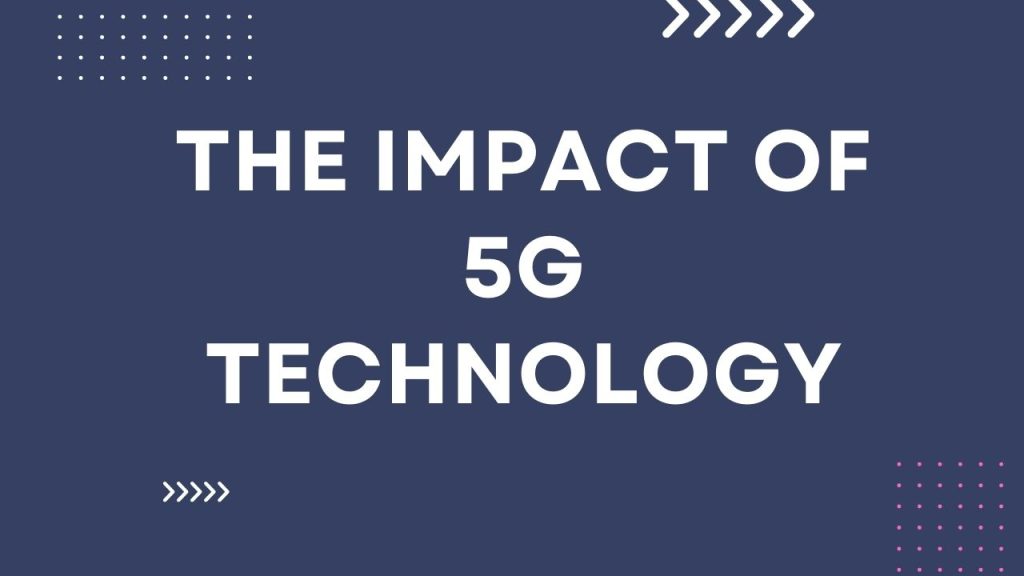Technology is anything that wasn’t around when you were born.” – Alan Kay
This quote puts an emphasis on the important aspect of technology and reminds us that technology is not something that came out just around this 21st century. The technology that resides in every human’s hand is the hard work and scientific innovation of thousands of amazing human beings, which has resulted in today’s technology. With this in our minds, let’s start on a journey through the 5G landscape.
What is 5G?
5G or the fifth generation, refers the the presently widely used cellular network technology. It is the successor to 4G LTE, which significantly faster upload and download speeds. Now imagine on a Friday evening you plan to download an HD movie, and the download get’s completed in just few seconds, now that’s the speed we are talking about and 5G not only promises to deliver this network, but is actually doing this one, with most popular cellular providers providing at least 100 mb/sec, and yes this all are possible with 5g.
How Does 5G Work?
Basically if anyone asks how does 5G work, then with just three words you could answer by simply saying untapped millimeter wave , and this wave allows 5G to carry massive and enormous amounts of data at very high speed, which is extremely beneficial for all of us, and note that we are not talking about some random 100 or 200 mb/sec, we are talking having an internet speed upto 10 gb/ sec and yes you heard it right 10 gigabytes per second. That’s is almost 100x faster than our 4G.
First let’s debunk some common misconceptions and myths that revolve around 5G technology.
Debunking Common Misconceptions
Let’s clear up some common misconceptions about 5G:
- 5G Causes Health Issues: There is no evidence from scientific research that links to the strong claims of 5G technology leading to health issues.
- 5G Replaces 4G: 5G expands on 4G rather than replaces it, and there will be many places where a cellular technology will employ an solution that consists a mix of the two.
- 5G is Only About Speed: While speed plays a big role, 5G is also about low latency, capacity, and reliability, and these concepts play a big part apart from the high speed we get to experience from 5G.
Now let’s have a bit of conversation about each of the terms that is latency , capacity and reliability.
Latency, Capacity, and Reliability in 5G
Latency in telecommunications refers to the delay before data transfer begins after an instruction is given. With 5G, latency is significantly reduced to as low as 1 millisecond, compared to 4G’s 20-30 milliseconds.
Capacity refers to the network’s ability to support a large number of devices. 5G networks can support up to a million devices per square kilometer—a 100x increase over 4G. This boost in capacity is crucial for the Internet of Things (IoT), smart cities, and large-scale industry automation.
Reliability in 5G concerns consistent performance and connection stability. 5G aims to provide 99.999% availability, ensuring a persistent and dependable network for critical applications like emergency services and financial trading platforms.
Now let’s look at statistics and data on how 5G is improving and affecting four major sectors: education, transportation, manufacturing, and entertainment and media.
The Impact of 5G on Various Sectors
1. Education
By facilitating real-time collaboration, immersive learning environments, and remote learning with high-speed internet and zero latency, 5G is set to completely transform the educational landscape. Imagine a situation where a top-tier professor from Oxford, Stanford, or Harvard is teaching students across the globe. This is not fiction—anyone can learn from these universities for free. Just type in the name of the university followed by “free courses” into Google, and you’ll find various free online courses. Additionally, you can enroll on platforms like Coursera; if your financial aid is approved, you can study online and receive a free certificate from these universities.
Statistic: The economic impact of 5G on the education sector in India alone is estimated to be $18 billion between 2023 and 2040.
2. Transportation
Autonomous vehicles (AVs) rely on real-time data exchange, and the data required to self drive an car (which easy weighs about hundreds of kilos), 5G can provide sufficient network connectivity without any issues and problems. With faster communication between cars, traffic systems, and infrastructure, the better autonomous driving vehicles can operate on road.
3. Manufacturing
Production lines may be optimized with real-time monitoring in 5G-powered smart factories. The seamless communication between automated robots, sensors, and AI systems lowers the downtime and boosts the output and enhances the performance of a factory outlet.
4. Entertainment and Media
5G will revolutionize how we consume media, from ultra-high-definition streaming to augmented reality (AR) and virtual reality (VR) experiences. Gamers, rejoice! Lag will be a thing of the past.
Security Concerns with 5G
Increased Attack Surface: The increased number of connected devices (thanks to 5G) creates more potential entry points for cyberattacks.
Complexity of Standards: The security standards and protocols of 5G could potentially leave a lot of security loopholes that hackers might exploit (for reference click on this link) and also check this white paper on 5G for reference.
Conclusion
To conclude this blog, 5G technology is set to transform our lives by providing enhanced internet speed, capacity, and reliability, which will improve and quicken any process that used to take a very long time.
Technology should improve your life… not become your life. ~ Billy Cox
Well we all can’t agree less on the above quote, as our daily tasks and our regular life becomes easier due to automation and technology, we should keep ourselves updated and armed with useful skills so that we can build a better society of ourselves and for those whom we care about.





